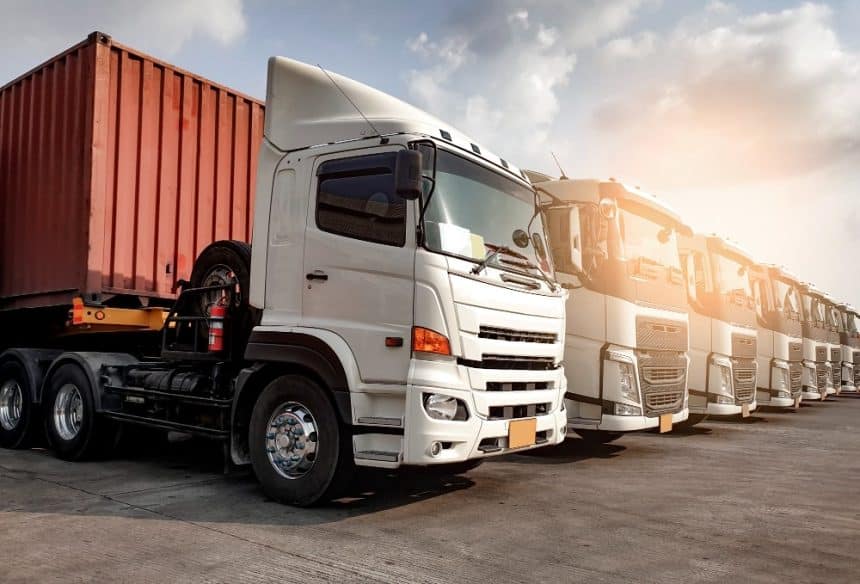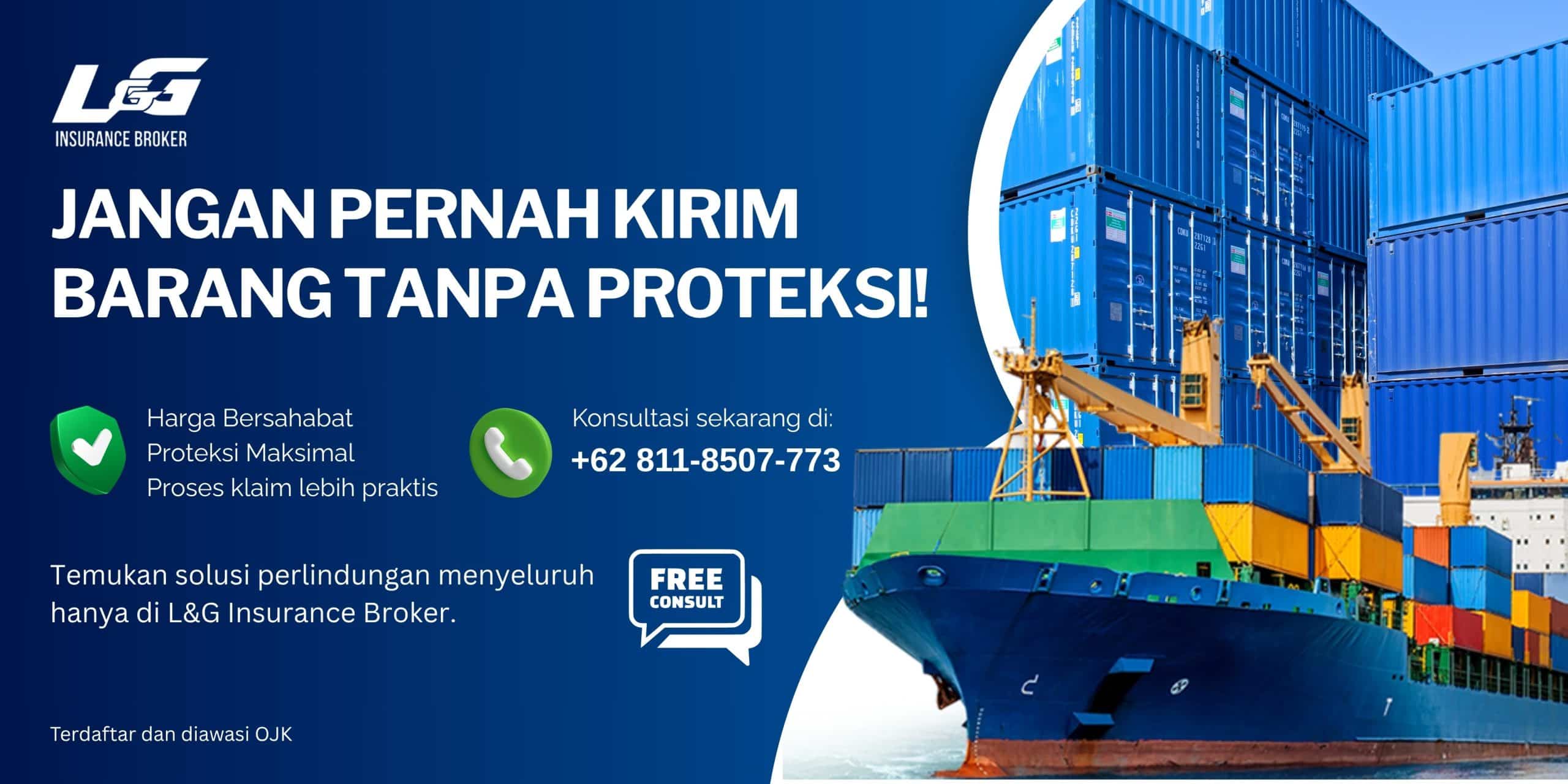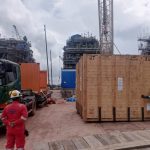Liga Asuransi – Logistics friends, entrepreneurs and truck operators, how are you? Welcome to our blog focused on risk management and insurance. This time, we will discuss various risks in shipping goods using trucks, including accidents, theft and damage to goods. We will also review its importance goods transportation insurance as a financial protection solution against these risks. If you find this article useful, please share it with your colleagues so that they can also get the same insight. Don’t forget to read hundreds of other informative articles on our blog that can help improve your understanding and strategy of your logistics business.
Delivery of goods via truck plays a crucial role in the Indonesian logistics ecosystem. As an archipelagic country with thousands of islands and continuously developing road infrastructure, land transportation is the backbone of goods distribution from production centers to final consumers. According to data from the Ministry of Transportation, more than 60 % of total domestic cargo volume is transported by land, indicating the dominance of trucks in the national supply chain. Diverse geographical conditions—from the mountains to the lowlands—demanding a reliable truck fleet and integrated logistics management to ensure the smooth flow of goods.
In recent years, the Indonesian logistics industry has experienced a significant growth trend. Digitalization of the ordering and cargo tracking process, as well as investment in infrastructure for the Trans-Sumatra toll road and the Java toll road, have increased delivery efficiency and reduced lead times. However, the spike in shipping volumes, especially during peak times such as Hari Raya and e‑Commerce sales also pose new challenges, including the risk of accidents, theft and damage to goods.
This article aims to help logistics businesses, goods owners and insurance companies to understand the various risks inherent in shipping via truck and explore protection solutions through insurance products. With the right understanding, it is hoped that each party can manage risks proactively and ensure the continuity of safe and efficient goods distribution operations.
General Overview of Goods Delivery by Truck in Indonesia
Indonesia, as the largest archipelagic country in the world, has road infrastructure that continues to develop but still faces geographical challenges. Toll roads on the islands of Java and Sumatra have been expanded, but in eastern regions, such as Papua and Maluku, road conditions are still limited—often bumpy, narrow, and prone to landslides during the rainy season. Connectivity between islands also depends on ferry crossings, which adds time and complexity to land logistics.
According to data from the Ministry of Transportation for 2023, the truck fleet in Indonesia will reach around 4.5 million units, consisting of various categories ranging from light commercial vehicles to heavy-duty trucks. About 70 % of the fleet operates on the island of Java, following Sumatra with 15 % and other regions at 15 %. This distribution reflects the concentration of economic activity in Java and Sumatra.
The role of trucking in the supply chain is very vital: starting from transporting raw materials from the port to the factory, distribution of finished products to regional warehouses, to final delivery‑miles to stores or consumers. The speed and flexibility of trucks makes them a top choice, especially for routes not served by rail or ship. However, geographic complexity and variations in infrastructure conditions require a mature risk management strategy so that goods delivery remains reliable and on time.
Types of Risks in Shipping Goods
- Risk of Accidents and Physical Damage
Accidents and physical damage are the most common risks in shipping goods by truck. Damaged, potholed or bumpy road conditions can cause accidents or excessive shocks that damage the load. Extreme weather—heavy rain, fog, or strong winds—worsens truck visibility and stability. Apart from that, human errors such as driver fatigue, negligence in loading goods, or violations of traffic rules also contribute significantly. The financial impact includes vehicle repair costs, replacement of damaged goods, and legal fines, while from the operational side it can cause delivery delays and loss of customer trust.
- Theft and Security Risk
Theft of goods during transit is still a big challenge. Vulnerable points generally occur in driver rest areas, truck terminals, or in remote areas without adequate supervision. The modes of theft vary, from carjacking, unloading cargo while the truck is parked, to breaking into containers using sophisticated equipment. Losses due to theft are not only in the form of the value of the goods, but also investigation costs, processing police reports, and insurance premiums which increase in the following period.
- Natural Risk and Force Majeure
Indonesia is prone to natural disasters such as floods, landslides and earthquakes. Flooding can submerge cargo or make roads impassable, while landslides close access routes and threaten the safety of trucks. Earthquakes can also damage road and bridge infrastructure. This force majeure event not only causes physical damage to goods, but also extends travel time, triggers additional costs for emergency handling, and requires complex rerouting.
- Risk Liabilities Third party
During the delivery process, trucks may cause damage to third party property or even injury to pedestrians and other road users. For example, a load that is not properly secured falls and damages another vehicle, or a truck crashes into a roadside building. The shipping company is responsible for legal claims and compensation, which can reach large amounts if it involves loss of life or high-value property. Notable claims cases in Indonesia include claims for compensation by homeowners damaged in accidents with trucks carrying building materials.
Types of Insurance for Shipping Goods
- Cargo Insurance (Goods in Transit)
Cargo insurance designed to protect the value of goods being transported from the risk of damage, loss or theft during transit. Basic coverage usually covers physical damage resulting from an accident, fire, or overturning of the truck; total loss of goods; as well as theft both while traveling and when the truck is parked. The policy can be extended to “all risk” which covers almost all causes of loss, except those specifically excluded (e.g. damage due to poor packaging). The sum insured option is generally adjusted to the CIF (Cost, Insurance, Freight) or FOB (Free on Board) value of the goods, as well as the market value when the claim occurs. Premiums are calculated based on a percentage of the insured value, usually around 0.1 %–0,5 % per delivery, depending on the type of goods and route.
- Motor Vehicle Insurance (Comprehensive & TLO)
Motor vehicle insurance protects the truck itself. A comprehensive policy covers vehicle damage due to various causes, including collision, fire, natural disasters and theft. In addition, this policy usually covers the risk of damage due to vandalism and loss due to natural disasters. Meanwhile, Total Loss Only (TLO) only covers total losses—that is, when repair costs exceed a certain percentage (for example 75 %) of the value of the truck, or vehicle lost/totally damaged. Comprehensive premiums are higher than TLO because the coverage is wider.
- Third Party Liability Insurance (Third Party Liability)
This insurance covers the legal liability of the driver or truck owner for property damage and injury to third parties. For example, if a loose load damages another vehicle, or a truck hits a pedestrian, causing injuries. The policy covers compensation costs, legal fees and compensation according to the agreed limit of liability, for example Rp 500 million per incident. Without this insurance, the company must bear all claim costs themselves, which can be very large.
- Riders and Supplements (Add‑on)
For more complete protection, companies can add riders or add‑on on the basic policy. For example, force majeure insurance covers losses due to specific natural disasters such as floods or earthquakes—often excluded in standard policies. There is also special equipment insurance for refrigerated trucks (reefers) which covers damage to goods due to refrigeration system failure, as well as insurance for heavy transport equipment (low-bed trailers) which covers the risk of damage to the trailer structure and oversized loads. This rider increases premiums, but provides extra peace of mind for shippers with special needs.
Insurance Claim Process
The cargo and truck insurance claim process involves several main stages that must be fulfilled to ensure the claim runs smoothly:
- Initial Reporting
Immediately after a loss occurs—whether an accident, damage to goods, or theft—the sender or driver is obliged to report the incident to the insurance company. Reporting times are usually limited, for example within 24–48 hours of the incident. Delays may result in claims being rejected.
- Evidence Documentation
Document collection is key. Documents generally required include:
- Delivery Order (SJ): Shows details of the load and delivery route.
- Bill of Lading (B/L) or Airway Bill (AWB): Proof of ownership of goods and transportation contract.
- Police Report: Mandatory for major theft and accident claims.
- Photos or Videos of Damage: Visual evidence of the condition of goods and vehicles after the incident.
- Invoice & Packing List: Shows the value of goods and details of the contents of the shipment.
- Claim Investigation
The insurance company will appoint a surveyor or adjuster to conduct a field investigation. The surveyor inspects the location, interviews the driver or witnesses, and assesses the cause and extent of the loss. This investigation report is the basis for claim decisions.
- Evaluation and Decisions
Based on the results of the investigation and documents, the insurance company determines whether the claim is fully, partially or denied. If approved, the compensation value will be calculated according to the policy and insurance amount.
- Claim Payment
Payment is made after all requirements are met. Turnaround time varies—usually 14–30 business days from complete paperwork. To speed up the process:
- Make sure all documents are complete and accurate.
- Submit a police report immediately after the incident.
- Communicate regularly with the adjuster.
Role of Insurance Broker
Insurance brokers function as intermediaries who help choose policies according to needs, explain clauses, and facilitate the claims process. The broker will ensure the collection of proper documents, negotiate the claim with the underwriter, and monitor the process until payment. Broker expertise is critical to expediting claims, reducing the risk of denial, and maximizing the value of compensation.
Determining Factors of Insurance Premiums
- Insured Value and Type of Goods
Cargo insurance premiums are generally calculated as a percentage of the insured value (sum insured). The higher the value of the item, the greater the premium paid. In addition, the type of goods also affects the rates: high-risk goods such as electronics, dangerous chemicals, or fragile goods (glass, ceramics) are usually subject to higher premiums than general goods such as clothing or building materials.
- Claim History and Risk Profile of Logistics Companies
Underwriters assess the claims track record of the shipping company or truck operator. Companies with a high frequency of claims or a history of large losses will be charged higher premiums to compensate for the risk of moral hazard. The risk profile also includes the risk management procedures implemented, such as driver training, loading SOPs and use of tracking technology. Good risk management practices can reduce premium rates.
- Travel Routes and Frequency
Delivery routes that pass through disaster-prone areas, conflict areas, or areas with high levels of theft will increase premiums. Long distances also increase the risk of damage and accidents. Additionally, delivery frequency (number of trips per month/year) influences premiums: the more frequently a fleet operates, the greater the likelihood of an incident occurring, so the total premium for a delivery portfolio will be adjusted by cumulative risk exposure.
Risk Reducing Strategy
- Driver Training and Safety Driving
Investment in driver training is crucial. Safety driving programs teach emergency braking techniques, maneuver avoidance, and fatigue management. Additional certifications such as the Defensive Driving Course (DDC) or Hazard Perception training help drivers recognize potential dangers early. Regular evaluation through simulations and refresher courses ensures driver competency is maintained.
- Tracking Technology (GPS, Telematics)
Installing a GPS tracker and telematics system on a truck allows real-time monitoring of route, speed and driving behavior (harsh braking, sudden acceleration). This data can be used to identify risk patterns, provide early warning when trucks depart from approved routes, and facilitate tracing in the event of theft. Integration with fleet management platforms also increases dispatch efficiency and route planning.
- Load–Unload Safety Procedures
Standardization of loading and unloading procedures prevents damage and loss. Make sure to use pallets, shrink wrap, and straps according to the type of load. Dual responsibility—involving both the driver and warehouse personnel—ensures the loading checklist is complete before the truck departs. At rest points, apply security SOPs such as double locking container doors and parking in areas with CCTV or security. Documentation of each loading and unloading process, including photos and signatures of related parties, strengthens evidence in the event of a claim.
The important role of insurance brokers for shipping goods by truck
Insurance broker acts as a strategic partner in protecting the investment value and operational delivery of goods via truck. With deep expertise in underwriting and regulation, the broker helps logistics companies choose the right policy—starting with insurance cargo, vehicles, to third party liability—and negotiate the best premiums and coverage terms. When a claim occurs, the broker facilitates communication with the underwriter, ensures complete documents, and speeds up the assessment process, so that claim payments can be made more quickly and minimize financial losses.
L&G Insurance Brokers offers end services‑to‑end: custom risk analysis, selection of insurance products according to the specific needs of the trucking industry, and full assistance during the claims process. With a wide network of leading insurance companies and an in-house surveyor team, L&G is able to provide optimal protection solutions and agile claims response. Entrust your truck shipping risk management to L&G Insurance Brokers for smooth operations and peace of mind.
Example of a successful vs failed claim case
Example of a Successful Claim Case
PT Thanks to complete documentation—travel documents, photos of items before and after the accident, and police reports—the insurance broker immediately submitted an “all risk” claim. The underwriter assesses the loss at CIF value and pays full compensation within 21 working days. This success was driven by fast reporting SOP compliance and systematic evidence collection.
Example of a Failed Claim Case
On the other hand, PT Y, a chemical transporter, lost part of its cargo due to a container break-in in the rest area. However, they failed to get compensation because they did not report the incident to the police within 24 hours and did not have photos of the condition of the container before departure. The policy also excludes losses without sufficient evidence, so the claim is rejected.
Lessons for Business Actors
- Comprehensive Documentation: Photos, videos and official reports (police, surveyor) are key.
- Reporting Time Compliance: Comply with police reporting time limits.
- Choose a Policy According to Risk: Add riders for specific risks (force majeure, theft).
- Engage a Professional Broker: Brokers like L&G Insurance Brokers help ensure paperwork is complete and negotiate claims.
By implementing these best practices, logistics companies can maximize the chances of successful claims and minimize operational losses.
Conclusion
Delivery of goods via trucks in Indonesia has a vital role in the national supply chain, but faces various risks such as accidents, theft and natural disasters. To overcome this, goods transportation insurance is an important solution in protecting the value of goods during the distribution process. The types of insurance available include insurance cargo, motor vehicle, and third party liability, each of which provides specific coverage as needed. Determining factors for insurance premiums include the insured value, type of goods, claims history, and travel route and frequency. Implementation of risk reduction strategies, such as driver training, use of tracking technology, and loading and unloading safety procedures, can reduce potential losses.
The role of insurance brokers, such as L&G Insurance Brokers, is crucial in helping logistics companies choose the right policy and facilitating the claims process. With a deep understanding of risks and insurance solutions, as well as implementing best practices, companies can ensure smooth operations and optimal protection of their assets.
Looking for insurance products? Don’t waste your time and contact us now
HOTLINE L&G 24 JAM: 0811-8507-773 (CALL – WHATSAPP – SMS)
Website: lngrisk.co.id
Email: oktoyar.meli@lngrisk.co.id
—






















